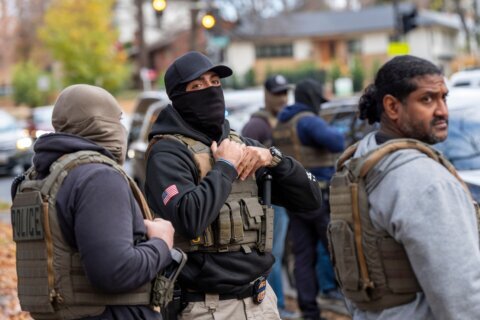Richard Kirchner has worked as a contractor for the federal government providing threat assessments for 20 years.
But in 2014, he found himself using his skills to help his wife, Kathleen, a lawyer, decide if she should take a case involving her brother.
Kathleen’s brother, Brennan McCarthy, also an attorney, was being sued by Jarrod Ramos. McCarthy had represented a woman harassed by Ramos — the man who would years later be accused of killing five employees of the Capital Gazette in their newsroom.
Based on his investigation, Kirchner said he saw many signs that Ramos could be headed down a violent path.
Kirchner began examining Ramos’ twitter account chronologically, and found very concerning material.
“For over an extended period of time, years, he had no other interests in his world other than what we call ‘wound collection,’” Kirchner said.
Kirchner said the picture being painted was of someone who felt he wasn’t getting the justice he deserved through the court system for those “wounds” or grievances which he continued to collect over time.
He said he also noticed tweets where Ramos admitted to visiting the Capital Gazette’s headquarters in Annapolis.
“This means to me, and I know from experience, that he has gone through a phase of surveillance of having a target list,” Kirchner said.
He also noted that Ramos had posted McCarthy’s home address and the address of the office McCarthy shared with Kirchner’s wife.
“It was his signal out on the twitter feeds, and a message to Brennan, ‘I’m watching you,’” Kirchner said.
Kirchner then examined a court motion Ramos filed in Prince George’s County — which he describes as written like a manifesto — that suggested to Kirchner that Ramos was in a “pre-attack cycle.”
Kirchner said Ramos’ case is similar to case studies he was familiar with, including that of convicted Oklahoma City bomber Timothy McVeigh and the Unabomber Ted Kaczynski. Both, he said, were “classic wound collectors.”
Based on his finding, Kirchner said he told his wife not to take the case and his brother-in-law to get off Ramos’ radar a quickly as possible.
“At the end of this, it’s not going to be good for somebody, somewhere,” Kirchner recalled saying.
Kirchner said his wife and brother-in-law followed his advice and eventually found themselves no longer subjects of Ramos’ tweets.
Kathleen said she sent an email to Anne Arundel County State’s Attorney Anne Colt Leitess in 2015 and offered to have her husband speak to investigators.
During a hearing Thursday, Leitess — who is lead prosecutor in Ramos’ murder trial — acknowledged to the court that she received that email and sent it to members of the Anne Arundel County Sheriff’s Office.
Following Ramos online after making his threat assessment, Kirchner said he later noticed that Ramos went silent. It is typical for people to isolate themselves socially and physically before planning an act of violence, Kirchner said.
Then, on June, 28, 2018, Ramos allegedly went into the Capital Gazette’s newsroom and opened fire, where he is accused of killing five employees. When he first heard that Ramos was accused by police of pulling the trigger, Kirchner said he was not surprised.
“It was very expected,” he said.
At a hearing for Ramos, Kirchner offered to speak more about his threat assessment in 2014 with the accused shooter’s defense team.
Ramos has pleaded not criminally responsible because of a mental disorder, which is Maryland’s version of an insanity plea.
Kirchner said he encourages people to speak up to law enforcement if they know someone who is exhibiting behavior they find concerning, so that person can get the help they need.
“Think of it as not leaving your co-worker or your friend or your relative kind of hanging out there, to go down this path,” Kirchner said.
He also believes law enforcement needs to work more closely with mental health professionals to identify and help people who may be going down a path to violence.








